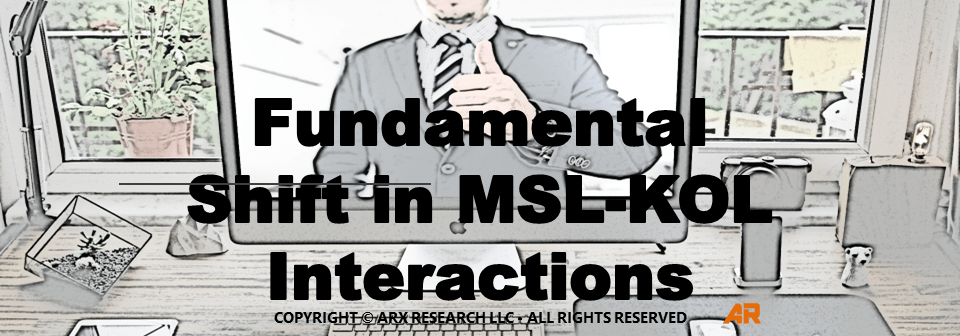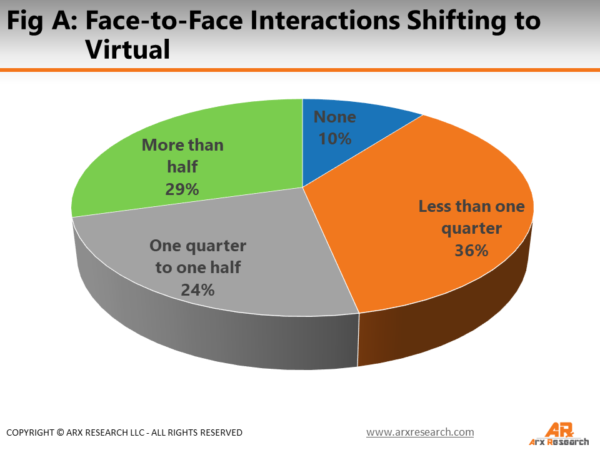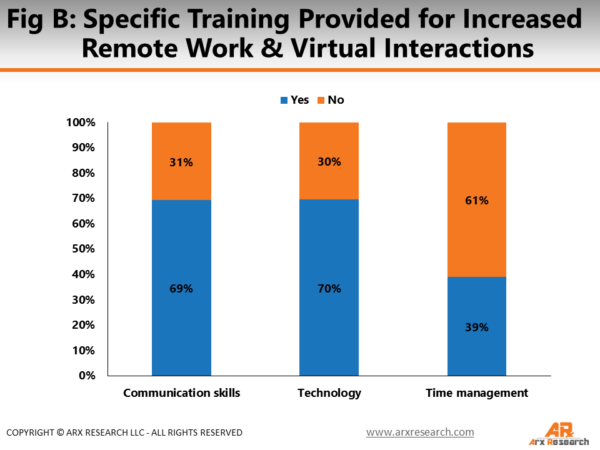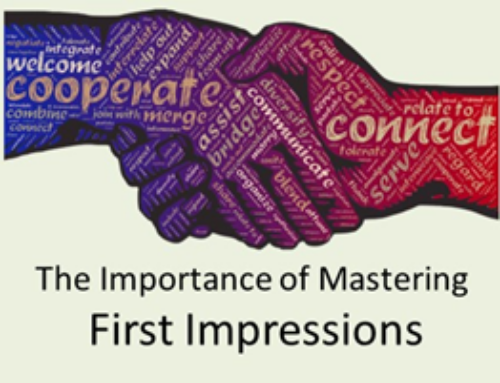We recently conducted research on how the pandemic has transformed the way Medical Science Liaisons interact with Thought Leaders, and findings show a fundamental shift in MSL-KOL interactions.
In pre-pandemic times, the favored means of interaction by both MSLs and KOLs were the traditional in-person face-to-face meeting, followed by email, phone, and virtual platforms (remember Skype?). While texting surfaced with the enhancement of smartphone capabilities, this medium never accounted as a significant means of communication between MSLs and KOLs—perhaps because it is too “invasive” and personal.
The first finding is that Thought Leaders want to meet less. The details are fleshed out in this article (1) which outlines a preference to meet four times per year or less, versus the previously more intense monthly pace. That in itself creates a bit of restructuring of an MSL’s work schedule.
Another finding indicates that the pandemic generated a strong adoption of virtually supported meetings. While distancing policies were in place during the pandemic, MSLs found the use of conducting virtual meetings the best option to keep in touch with KOLs. Months of utilization made everyone much more comfortable with this medium and it seems a good portion of these KOLs (and MSLs) liked it so much they only want to go that route from now on.
As depicted in Figure A, a staggering 29% of the 500+ surveyed Medical Affairs professionals indicated that half or more of their KOL relationships have now adopted virtual interactions ONLY! Another 24% of respondents say that one-quarter to one-half of their relationships are now in virtual mode. Only 10% of survey-takers pointed out that none of their Thought Leaders opted for it. Taking into account that each Medical Science Liaison maintains on average 33 KOL relationships, the shift from in-person visits to virtual has a tremendous impact on how MSLs, and the Medical Affairs teams, operate.
While MSLs did conduct virtual meetings before, our research shows it accounted for less than 10% of all their communications with Thought Leaders. New research is due on that front to get new numbers but regardless, such drastic changes in a work environment create chaos and it often takes time to iron out new processes of operation. Especially when remote virtual communication has gone from occasional use to a standard component of an MSL’s work within the span of a few weeks.
In a subsequent survey, we asked 175 participants to provide feedback on their preparedness regarding the upsurge in virtual communication. More specifically, we asked if their organizations provided training on three core needs that ensure the good conduct of virtual work—communication skills, technology, and time management. The results are shown in Figure B below.
A quote from Harvard Business Review goes like this:
“…surveys indicate that only about 30% of companies train employees in virtual work skills, but when they do, the training is more likely to focus on software skills and company policies than on social and interpersonal skills.” (2)
It seems pharmaceutical organizations are doing great to adjust to the “new” normal, with just about 70% of them providing both communication skills and technology training to their MSLs team members. We are concerned about the other 30% of organizations that are not up to the new rules of engagement and hopefully, this will change soon.
But the main concern is the evident lack on the “Time Management” component where only 40% of survey participants reported receiving training on that front. Although the Medical Science Liaison role is primarily a home-based position (when not traveling to Thought Leaders’ locations), the fundamental shift in MSL-KOL interactions adds “work from home” situations.
The pros and cons of such a model are:
Pros:
-More independence and flexibility: No more need for a “9-to-5” schedule. As long as (virtual) meetings are attended, work is done, and deadlines are met, you can go walk the dog at the nearby park or squeeze in a half-hour in the afternoon to watch an episode of your favorite show.
-Less commuting and increased productivity: Our research shows MSLs spend an average of 20% of their time traveling for meetings* with KOLs. Transitioning from in-person to virtual liberates many hours per week to tackle extra work, or nurture additional Thought Leader relationships—increasing productivity.
Cons:
-Less face time opportunities with KOLs: Whether we like it or not, in-person interactions are still the best way to enhance relationship quality.
-Increase in home office cost: it comes with the usage of the space. Hopefully, employers make up for it somehow.
-Increased isolation and risk of overworking: Suddenly switching from in-person interactions and travel “action” to more confinement might prove difficult for certain individuals. Working more from home also offers the perks of having more family time and playing with the dog, but it also removes boundaries between work and home life, which in many cases can make for very long workdays.
The last “cons” point is particularly important. The pandemic provoked an intensification of mental health issues and organizations need to ensure that their remote workers have the required training to self-discipline and not fall into difficult personal situations. Therefore, time management training is key to helping manage the fundamental shift in MSL-KOL interactions. Managers and colleagues need to stay in touch regularly to check in not only for work but also for the personal health of their colleagues.
Key considerations:
-Virtual is fine but try to keep this for well-established KOL relationships. There is no better way to grow relationships and enhance mutual trust than by meeting in-person. Developing new relationships will inevitably require in-person visits or attending conferences. Even well-established relationships will require occasional physical visits.
-With fewer travel demands, MSLs have now “bonus” time they can use to add a few more KOLs to their list or take part in internal projects they would otherwise not have time to get involved with. One finding from multiple KOL feedback surveys we conducted was KOLs’ concerns about MSLs’ responsiveness. Having more time available in a home-based office instead of juggling travel constraints allows MSLs to be more responsive to KOLs’ requests. Time management and self-discipline are key.
-Employer’s support for technology and security. Working remotely when you don’t have the right equipment or when tech support is hard to get is not the best scenario. Organizations should make sure (and most seem to be fine based on the research) that MSLs are equipped properly and trained to use the technology to ensure seamless interactions with KOLs—it’s already challenging to schedule meetings, make sure the technology works! Also, home-based networks may not offer the best security and MSL-KOL discussions can be very sensitive so it’s imperative that communication networks be secured.
(1) How KOL Meeting Preferences have Changed Over Time – Arx Research
(2) The Virtual Work Skills You Need — Even If You Never Work Remotely (hbr.org)








